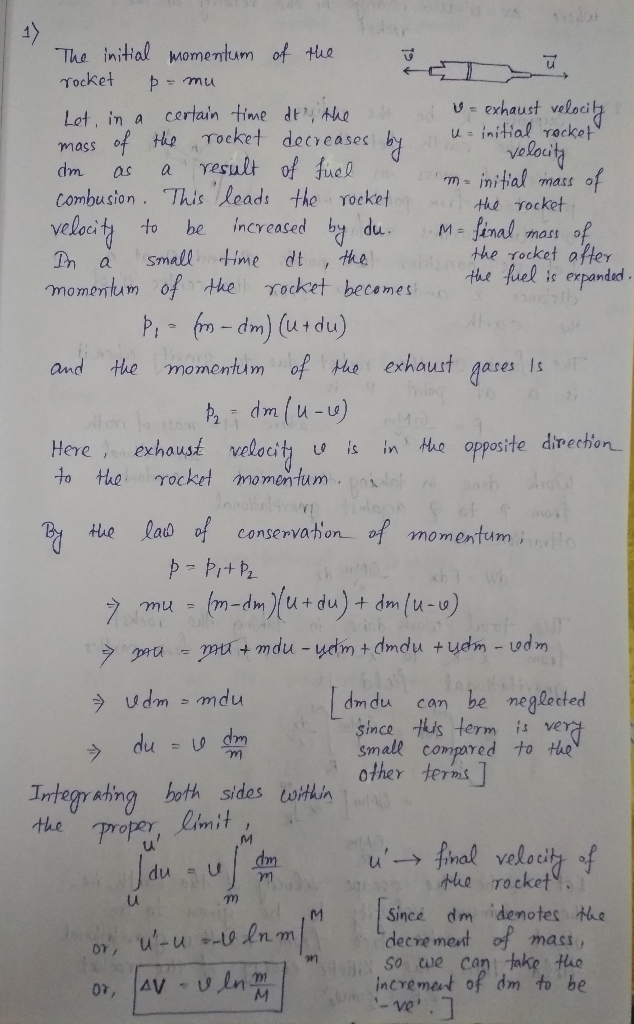Question
In: Physics
1. Star with Newton's third law: dp/dt = ΣF where p is the momentum. In space,...
1. Star with Newton's third law: dp/dt = ΣF where p is the momentum. In space, the sum of the external forces ΣF = 0. For a rocket in space, the mass and velocity change with time as the rocket expends its fuel. Show from Newton's third law that ΔV = v ln(m/M) where m is the initial mass of the rocket, M is the final mass of the rocket after the fuel is expended, v is the rocket's exhaust velocity and ΔV is the change in the velocity for the rocket
2. Now, the rocket needs to get to escape velocity to get to the moon. Use conservation of energy to derive an expression for the escape velocity. If we start at 200km above the surface of earth, calculate the ΔV we need to escape from Earth and get to the moon.
3. Finally, use the earlier Rocket Equation calculate the fraction of the initial rocket's mass that is dedicated to fuel to make the journey from the Earth to the Moon. In this case, v is 4500 m/s.
Solutions
Related Solutions
Consider a star at rest in space. The star radiates isotropically, and the net momentum flux...
2) Momentum and Newton's Second Law: Impulse (a) A block of wood is struck by a...
Let a logistic curve be given by dP/dt = 0.02*P*(50-P) with the initial condition P(0)=5 This...
Coulomb's Law 1. What evidence do you see that Newton's third law applies to electrostatic forces?...
A. Show that the ideal gases following PV=nRT satisfy (dp/dv)(dv/dt)(dt/dp)=-1. B. Show that van see waals...
According to Newton's third law, for every force there is always a reaction force of equal...
a) What is the unit of charge? b) How does Newton's third law relate to Coulomb's...
2-1 Discussion: Two-Dimensional Motion, Forces, and Newton's Third Law Choose a real world situation, such as...
I am in physics and do not understand Newton's third law when expressions like mgsintheta are...
Determine the integrated form of the third-order rate law of the form: -d[A]/dt = k[A]^3. Starting...
- Six hundred and five survivors of a heart attack, were randomly assigned to follow either (1)...
- In one type of genetic therapy, healthy cells are introduced into diseased tissues. Which of the...
- Suppose that there are four people who enjoy a public good. One person has a willingness...
- LetsVacuum, a family-owned manufacturer of high-end vacuum cleaners, has grown exponentially over the last few years....
- For a Western blot method, please explain each step (simple as possible) in the order below...
- 14. Keller Construction is considering two new investments. Project E calls for the purchase of earthmoving...
- how to put formulate the question : Calculate the number of atoms present in 3.752g sample...




 genius_generous answered 3 weeks ago
genius_generous answered 3 weeks ago